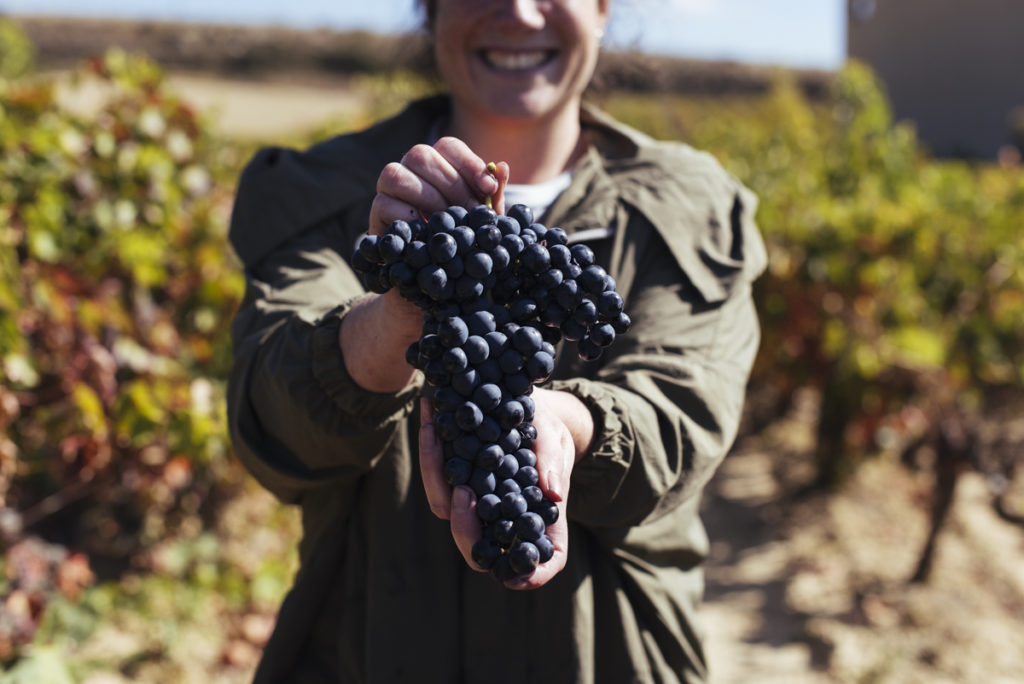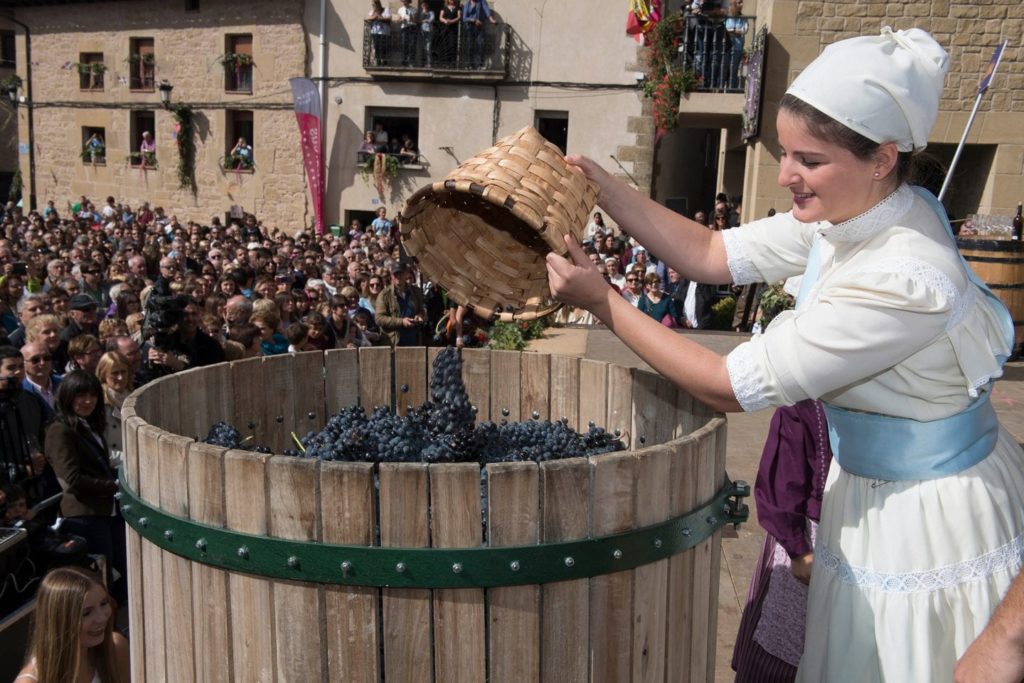However, to be realistic, grape growing is also subject to the uncertainties of weather that can make or break the year’s crop. When people ask us, “What about the crop this year?”, all we can say is “We have to wait until the harvest is over.” Experts’ predictions can change from one day to the next due to a late spring hailstorm or sudden cold weather and heavy rain during the harvest.
It’s no wonder that grape farmers have their own Patron Saint – St. Vincent.
In our region, September is the time of our harvest festivals. Festivals are so important to us that we celebrate two of them – during the week-long festival in Logroño in honor of St. Matthew and at an itinerant festival in Rioja Alavesa in the Basque Country.
Of course, picking starts in August and ends later, usually at the end of October, but the symbolic culmination of the long, almost always uncertain growing season gives us a good reason to celebrate.

Photo: Rioja wine.
San Mateo Harvest Festival in Logroño
The 66th San Mateo (St. Matthew) Harvest Festival took place from September 16 through the 22nd. Locals and visitors alike tie a scarf around their necks and take to the streets, from dawn until the wee hours of the morning to celebrate. Between the ‘cohete’ (launch of a rocket from the balcony of the City Hall) at noon on the 16th and the ‘quema de la cuba’ (burning of a small wine barrel by the town’s social clubs at 10pm on the 22rd), the Logroño City Hall organized over 300 activities for all ages to assure that the level of excitement remains high throughout the week.
In addition, the city’s tapas bars and restaurants are busy, with reservations made weeks in advance.
While most of the activities are secular, one of the high points of the festival takes place on the 21st, St. Matthew’s Day: The Blessing of the Grapes and the Offering of the first grape juice to the Virgin of Valvanera. Here, a child from each village in La Rioja with vineyards, dressed in a regional costume, , empties a small basket of grapes into a large open wooden barrel. The grapes are then trodden by foot and the juice blessed during a Mass celebrated in the Logroño cathedral.

San Mateo Harvest Festival in Logroño. Photo: Ayuntamiento de Logroño.
Rioja Alavesa Harvest Festival (September 18)
The 28th Rioja Alavesa Harvest Festival is an interesting one-day event, unique because it takes place each year in a different wine village in Rioja Alavesa. This year in Navaridas, the day was filled with activities not only featuring wines from each village but also tutored tastings of wines from the host village. For visitors, of special interest in addition to wine are traditional Basque activities such as a woodchopping competition, a Basque handball tournament and regional dances.
The festival always kicks off with the ‘pregón’ or official proclamation. This year, Iñigo San Martín, a researcher on diabetes and cancer at the University of Colorado and performance director of the United Arab Emirates professional cycling team, made the opening speech praising the virtues of wines from Rioja Alavesa.
Following the ‘pregón’, the first grapes from the harvest are pressed followed by a tasting of the juice.
The two festivals have traditionally taken place a week apart, but the dates have coincided since 2022. An interesting proposal for visitors from outside our region is to take time out from the third day of the hectic Logroño festival to visit the smaller but no less exciting Rioja Alavesa festival in Navaridas.

Rioja Alavesa Harvest Festival. Photo archive: Irekia.
Wineries increasingly include harvest activities in their wine tourism program. One example is at Bodegas Valdemar, winner of a ‘Best Of Wine Tourism’ award in 2018 for Innovative Wine Tourism Experiences with their program ‘ Vendimia en familia’ (The Harvest for the Whole Family).
On October 1,7 and 12, families can discover the essence and origin of Rioja wines.
Families can learn about grapes, vineyards and wines by personally harvesting grape clusters, and pressing them traditionally by foot to obtain grape juice that will later be transformed into wine.
This is followed by a traditional Rioja ‘almuerzo’ (mid-morning snack) along with a tasting of Valdemar wines.
Children taste two types of ‘mosto’ (red and white grape juice) and as a gift receive soft candy made with Valdemar grapes.
Whether the crop has been excellent, average or worse, we always take time to celebrate the end of the harvest and the beginning of the grape’s transformation into wine.
Text by Tom Perry, Inside Rioja
Featured photo: Gobierno de La Rioja.
Learn more about Bilbao-Rioja Great Wine Capitals